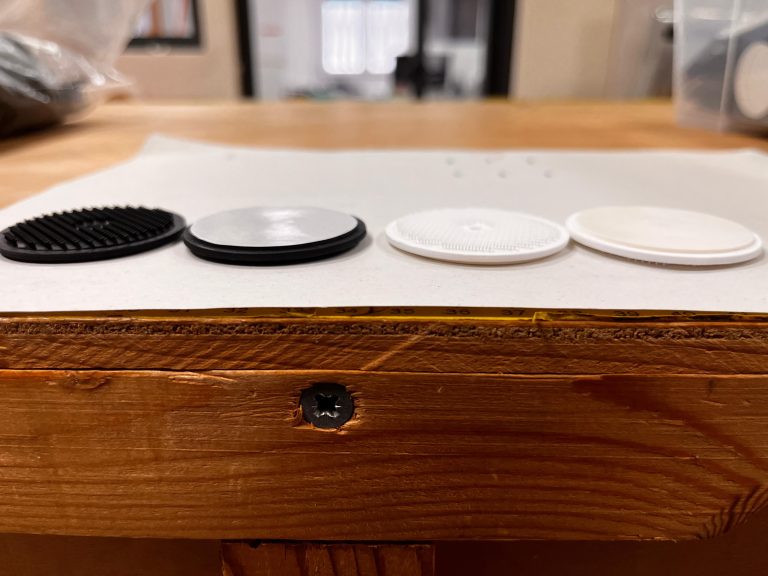 Since early 1960s the marine industry has seen an increasing use of polymer matrix composites. Thanks to their excellent specific properties they achieve high performance while maintaining low weight. This is why they are used in many industries such as marine, aeronautics and motor racing.
Since early 1960s the marine industry has seen an increasing use of polymer matrix composites. Thanks to their excellent specific properties they achieve high performance while maintaining low weight. This is why they are used in many industries such as marine, aeronautics and motor racing.
But, the increasingly massive use of these materials which are difficult to recycle has a negative impact on the environment since the systems currently available for disposal are essentially 1-landfill and 2- incineration, none permits a responsible management of the end of life composite.
Some different materials
A boat it’s a complex object, that’s why to correctly reciyling it is required to identify the different materials, parts and the techniques needed to recover them at the boat’s end of life cycle. It is now nearly twenty years that the marine industry has been trying to build boats with natural composites using flax, jute, bamboo, etc. Linen, for instance, is a good material because not only is sustainable and biodegradable, but also, it has mechanical properties comparable to glass fibers.
As for resins, the choice is less wide, acrylic resin can be considered as a valid alternative to epoxy resin, as well as natural origin resins already available. In tensile tests matrices reinforced with linen fibers have reached an excellent elastic modulus, tensile strength. At bending texts the epoxy resin proves to have superior stiffness properties but with average lower elongations.
Both in international research and in avant-garde applications, bio-composites are receiving attention from a market that is increasingly attentive to the environmental preservation therefore to the eco-compatibility of composite materials
Bio-composites, starting from the basic concept of FRP (fiber reinforced plastics) that is combination of polymeric resins and fibers, instead of using materials of synthetic origin, deriving from oil processing, exploit totally or at least in part elements of natural origin, such as flax fiber, hemp, bamboo, or jute.
Types of Biocomposite Materials
The new generation of these materials focuses on their sustainability and eco-efficiency, with products derived from biodegradable plastics and natural polymers derived from renewable crops year by year, using biomass as raw material, forming a new sustainable product portfolio, eco-efficient and competitive on international markets.
An example is given by natural compounds or bio-fiber derivatives. The combination of natural fibers such as hemp, flax, jute, with polymeric matrices of both renewable and non-renewable origins, is used to produce increasingly more competitive materials than traditional composites, although their production sometimes requires more attention, such as a particular interface between the bio-fibre and the matrix and more complex processing phases.
Sustainability in marine industry
 The marine industry has known, since the second half of the nineties, a considerable expansion, both with regard to the transport, pleasure crafts and cruise ships sectors, but also and above all due to the growing public interest in sailing and leisure marine sports in general.
The marine industry has known, since the second half of the nineties, a considerable expansion, both with regard to the transport, pleasure crafts and cruise ships sectors, but also and above all due to the growing public interest in sailing and leisure marine sports in general.
Currently, the search for innovative materials, and consequently for suitable production technologies, it is one of the main objectives not only for what concerns the marine industry; an increasing number natural materials composite guaranteeing adequate mechanical and thermal performance is available.
In Europe, this research is focusing the general attention on reinforcements of plant origin. The awareness of the future exhaustion of raw materials and the increasingly widespread interest in environmental problems have generated the need to replace mineral and synthetic reinforcements with annually renewable natural fibers. This perspective places the interest of many technicians and yacht designers on the possibility of using natural fibers in marine construction.
For about a decade, interest in these products has been growing and in many cases it has led to the industrial use of bio-composites. For example, short natural fibers and wood dust are used as fillers in marine construction (thermoplastic blankets), and also for automotive components, furniture and trains. The long vegetable fibers obtained from linen, hemp, bamboo, jute, are used as a structural reinforcement to replace fiberglass. These fibers, besides being less expensive than glass, are also harmless to humans if inhaled, are not abrasive and are naturally biodegradable. There is unfortunately a negative aspect: these fibers are hydrophilic so they must be protected otherwise they absorb moisture with easily imaginable negative consequences. The following comparative table clarifies the differences between the two types of materials very well.
What about resins?
It is clear that, for a composite to be truly biodegradable, it is also necessary that the resin and not only the reinforcement material is. Various companies today produce resins derived from waste biomass. The resins thus produced, reinforced with natural fibers allow to obtain a composite totally derived from nature. These thermosetting resins can also be reinforced with traditional reinforcements such as glass or carbon and used for all construction techniques.
We are currently testing totally biodegradable composites in the production of non-structural parts for the automotive industry, among their advantages we remember the absence of VOC (volatile organic products), reduced use of oil and of course the total renewability of the sources. The physical properties of these composites are practically the same as the traditional ones, including considerable resistance to corrosion.
Possibility of use
It is proven that the mechanical properties of bio-composites are comparable to those of glass fiber reinforced composites. The major problems to be solved are the hydrophility of these materials, which greatly limits their use and the quantity of fibers produced. On the other hand, the current European directives on the disposal of polluting materials make this sector very interesting and certainly worthy of further research.
The application of natural materials in the marine sector is of particular interest as the use of these products, due to their intrinsic characteristics, would lead to the solution of many problems and to improved performance.
Natural material for boats
In particular, a balance can be found of the innovative aspects deriving from the introduction of materials of vegetable origin: first of all the substitution of synthetic fibers, such as glass and carbon fibers brings a considerable lightening of the structure due to the enormous specific weight difference between these materials and natural fibers (just think that a linen fiber weighs 1.4 g / cm3 against 2.1 of a glass fiber) and a consequent reduction in fuel consumption (and harmful emissions).
Not forgetting the opportunity of exploiting a resource that grows and renews itself every year, and which, being totally biodegradable, does not produce any residue at the end of its life cycle (life cycle assesment).
Obviously, like any technological innovation, the use of natural reinforcements for composites for the marine industry is not without problems. One problem that must be faced when deciding to use fibers of vegetable origin is their compatibility with the polymeric matrix that will support them. These operations are still under study and although many possible treatments have been proposed and tested, there are still many aspects to be defined and still many possible alternatives to those already tried.
Sustainability, industrial ecology, eco-efficiency, green chemistry and new laws are guiding the development of the next generation of materials, products, and processes. Bio-Composites (Natural / Biofiber) are emerging as alternatives to glass fiber reinforced composites
The road towards really “green” composites is still very long, nevertheless the path to innovation is full of new technologies and new products.







